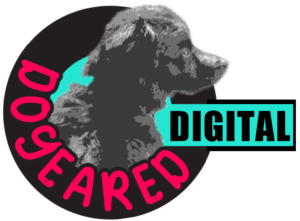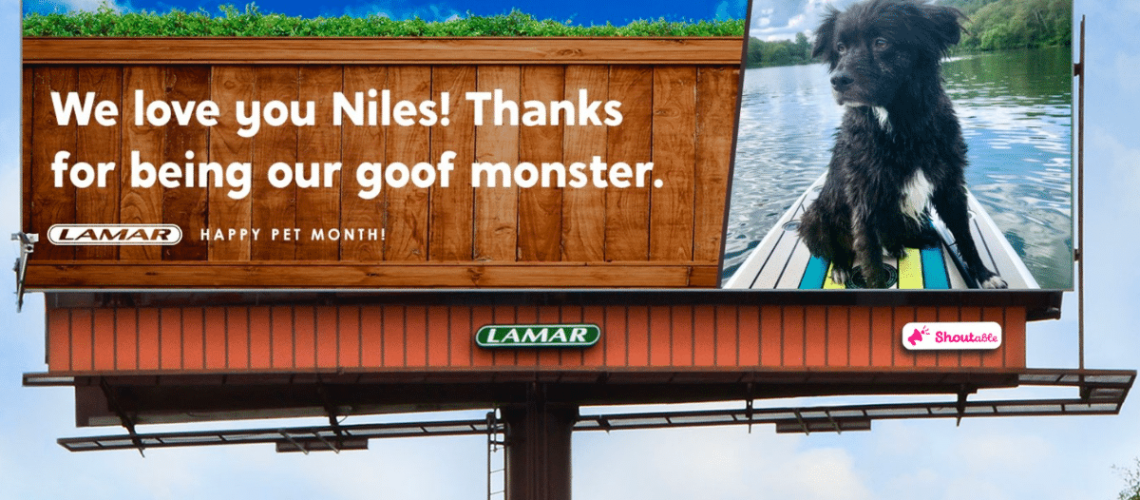Creativity and careful planning may sound like contradictions. But the reality is, they often lean on each other to cultivate the best brand stories.
Last time we explored 4 strategies to back your next creative campaign. Today, we look at four more.
These blueprints will help reshape your perspective and unleash your inner creative when you’re concepting how to tell your story.
1. Take contextual to the next level
Most campaigns start out with the development of the message, then marketers try to fit it into the space. What if you reversed it?
When you start through the lens of the channel, you can concept with some really compelling messaging and creative unique to the space, offering contextual content that resonates with the time and place the audience comes across it.
In 2020, at the heart of the pandemic, Bumble placed branded benches with two seats six feet apart in public spaces across various cities. These benches featured clever taglines such as “This is what six feet apart looks like” and “Make this bench your Bumble match.” The campaign encouraged people to practice social distancing while also promoting the Bumble brand message of connection and community in a safe and socially responsible way.
In this example from Clorox, rather than exploring a new format, the brand created a traditional TV spot with a creative twist – it humorously parodied the program during which it aired: The Bachelor.
Premiering in 2015, the commercial showed a woman and a man having a romantic conversation in a hot tub, only to reveal that there were five other men in the same tub with them, all competing for her attention. The ad used the tagline “For life’s bleachable moments” to suggest that the hot tub needed some serious cleaning with Clorox bleach.
2. Support a cause
Cause marketing is an effective way for brands to create a positive impact while also gaining brand loyalty. Consumers today are more socially conscious than ever, and hold brands to higher standards when it comes to making a positive impact on society. Brands that demonstrate their commitment to social and environmental causes are more likely to win over consumers who share the same values.
Dove launched the Self Esteem Project in 2004, which has housed many eye-opening campaigns, stories, and experiments in its two decades of existence. Their global initiative aims to raise awareness of the negative impact that unrealistic beauty standards have on young people’s self-esteem. The project provides resources and educational tools to help children and young adults develop positive body images.
One of the recent campaign from the Dove Self Esteem Project is the #NoDigitalDistortion movement. The campaign highlights the impact highly edited photos can have on body image, especially among young girls.
When it comes to sustainability and food waste, brands know they have a major responsibility in protecting the environment. SuperMax, a Puerto Rican supermarket chain, endeavors to transform the concept of “use by” into “use for” by giving a second life to food products and showcasing what can be done with their packaging. Shoppers can scan items with an AR (Augmented Reality) filter on their phones to see suggested alternative uses helping the product stay out of the landfill long past its printed expiration date.
3. Satire: your ultimate witty weapon
Why settle for forgettable when you can tickle funny bones and leave a lasting impression? Satire injects a refreshing dose of humor into your marketing, instantly captivating your audience by turning tired messaging on its head. With satire, you can cleverly navigate delicate topics and spark important conversations.
For International Women’s Day 2023, Ford released a satirical ad for a new car called the “Ford Explorer Men’s Only Edition.” In the ad, Ford aspired to create a car leveraging features exclusively created by men. The spot showed this was an impossible task, raising awareness for women’s massive yet uncelebrated contributions to the automotive industry. The campaign was a prime example of how humor can be used to shed light on important issues.
Laundry detergent brand Skip played the long game by launching a trailer for a fake reality TV show called “Space Kids,” which purported to space train a 7-year-old girl by isolating her in a capsule with only screen technology for a year. Viewers, of course, were horrified and the backlash was extreme and immediate. In the second phase of the campaign, Skip revealed that the reality show was in fact fake, created to highlight excessive screen time and the declining time kids are spending outdoors.
4. Make it personal
Hyper-personal doesn’t have to be synonymous with creepy. Consumers view their personal data as transactional, and many are willing to trade it for experiences tailored uniquely to them. Rather than thinking about how personalized campaigns can get around privacy practices, think about how your brand can offer personalization in a way that is truly beneficial to the consumer.
In honor of National Pet Month in May of this year, Lamar Advertising offered free billboard spots for people’s pets across the entire United States. Through a partnership with Shoutable, pet owners were able to upload a photo of their pet, write a customized message, and choose a location and 15-minute window to see their pet on the big screen. The campaign was a fantastic way to deliver a hyper-personalized experience exclusively with data the user offered up freely in a completely transparent environment.

Wendy’s infamous Twitter account is another example of impactful personalization that relies on user engagement rather than 3rd-party data. The account has gained global accolades for their quippy humor, exceptional timing, and sassy responses to customer inquiries, comments, and other brands. One of the best examples of Wendy’s singular brand of personalized humor is their annual #NationalRoastDay campaign, when they make fun of any Twitter user who opts into the fun.
Start with strategy to reach your “aha” moment
No matter your brand or budget, your can find inspiration to tell your own story in these strategies. Keep a swipe file of campaigns that have inspired you to next time you’re ready to bring some out-of-the-box creative to the table.
With some intentional introspection, you can uncover why you were moved by the campaigns that you’ve chosen. By focusing on the why rather than the what, you can put yourself into the mindset of a strategic creative thinker and reveal how the story can come to life for your own brand.
Embrace the lessons learned from these successful campaigns, while also infusing your unique brand identity and values into the storytelling process. By blending inspiration with introspection, you’ll be equipped to create marketing initiatives that engage your audience, ignite their emotions, and leave a lasting impression. Your story is waiting to be told.

